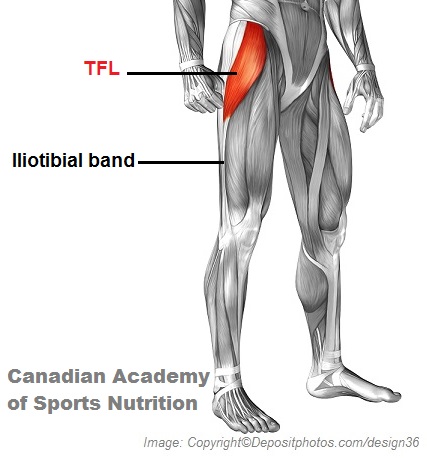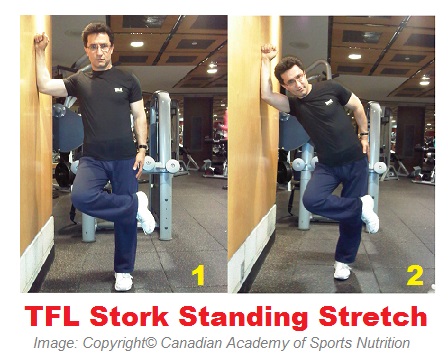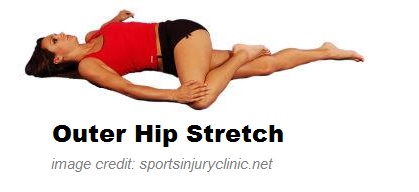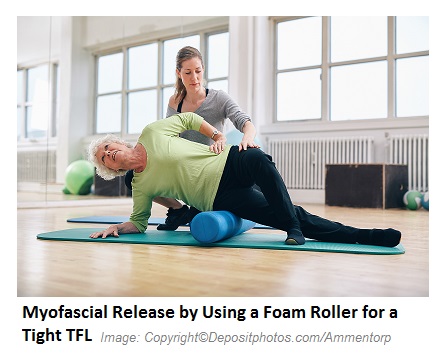Tensor fasciae latae (TFL) is a small muscle that originates from the anterior iliac crest, merges with iliotibial band, and attaches to the lateral condyle of the tibia.
The primary functions of the TFL are flexion and abduction of the hip. It also helps with lateral rotation of the tibia.
When the TFL is tight and locked up, it may cause pain in the hip joint, groin, buttock, lower back (over sacroiliac joint) and even the lateral aspect of the thigh. The most common reason of tight TFL is sitting for long hours at a desk or commuting in cars, which causes shortening and tightness of the hip flexors.
Tightness of TFL is also common among athletes involved in horse riding, running, and cycling.
Other causes of tight TFL are:
1) Over-striding. It is running with a stride that is longer than optimal for your body length.
2) Running on crowned roads.
3) Bow legs for any reasons.
4) Shoe factor: worn out running shoes or shoes without beefed up heels.
How to Relieve Tightness:
1) Stretches:
a) TFL Stork Standing Stretch.
b) Outer Hip Stretch.
2) Myofascial release by using foam roller.
3) Therapeutic Exercises.
TFL Stork Standing Stretch:
To my experience, this is the best stretch for a tight TFL and tight iliotibial (IT) band if you do you it right. To do this stretch, stand beside the wall and place your hand on the wall to support the body. Raise the leg that is closest to the wall and bend the knee and place it on the other leg right above the knee to be in a stork standing position (figure 1).Place your other hand over the TFL that you are going to stretch. Then while standing on one leg, slowly bend toward the wall. Keep your leg still and bend the torso (figure 2). You should feel tension force over your TFL. Hold it for 10 – 20 seconds. If you do not feel tension force over your TFL, you are doing it wrong! If you are unable to do TFL Stork Standing Stretch, then go with outer hip stretch.
Outer Hip Stretch:
Lie down on the floor on your back. To stretch your left TFL, cross your left foot over the right knee. Keep your left knee bent. Then using your right hand, pull and push your left knee across your body. It is highly important to keep your left shoulder on the floor. Hold that position for 5 – 10 seconds (See the figure). Repeat this for your right TFL as well. You could increase the time as you continue stretching.
Foam Roller Myofascial Release:
You can do it by yourself or you may need a trainer to assist you with the right technique. To stretch the right TFL, lie down on a foam roller on your right side in a way that foam roller is placed on the upper lateral aspect of the thigh at the level of your side pocket and one inch below to your anterior iliac crest (see the figure). Then place your left leg in front of your right leg as in the figure. Support your body with your elbow on the floor. Then start moving up and down on foam roller from your anterior iliac crest level to one third upper part of your thigh for 5 – 10 seconds. You could increase the time as you go.
Therapeutic Exercises:
These exercises will be published separately in another article soon.
Abazar Habibinia, MD, DFN, CSDTT, DO (candidate)
Executive Director of Canadian Academy of Sports Nutrition





